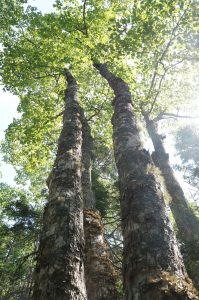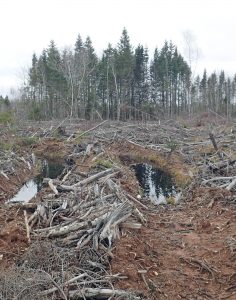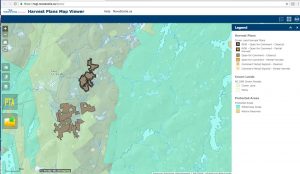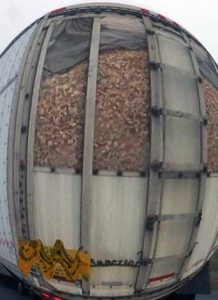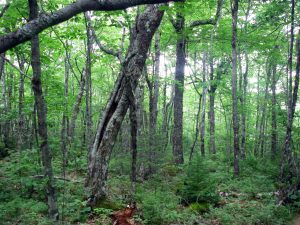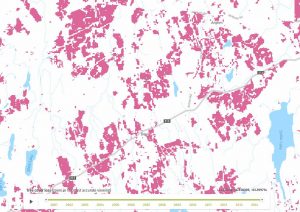For the sake of the forests and salmon, it’s time for NSDNR/Westfor to heed the science and put the brakes on clearcutting in SW Nova Scotia.

I was pleased to read in the Dec 2016 issue of Rural Delivery that NSDNR soil scientist Kevin Keys is participating in a 3-year experiment to examine the efficacy of liming forests for the benefit of salmon and trout in Nova Scotia river systems stressed by acid rain.
The experiment is being conducted along the West River/Sheet harbour where in 2005 the NS Salmon Association set up a lime doser which feeds powdered lime mixed with water directly into the river. The lime increased calcium levels and pH which resulted in many more salmon smolts going out from the river. Smolt numbers increased from about 2000 initially to 10,000-12,000 recently.
Now the Nova Scotia Salmon Association and the Eastern Shore Wildlife Association, with the support of Fisheries and Aquaculture and NSDNR and federal agencies have started some liming on adjacent forested land using helicopters. Based on experience in Europe, it is hoped that terrestrial liming will be cheaper than adding lime directly to the water, involve much lower maintenance and be more effective over a larger portion of the watershed as well as for long periods of time. (If the lime doser stops, the water acidifies very quickly). Continue reading →
 The Christmas season hasn’t stalled the flow of editorials and letters about forestry practices in Nova Scotia.
The Christmas season hasn’t stalled the flow of editorials and letters about forestry practices in Nova Scotia.

